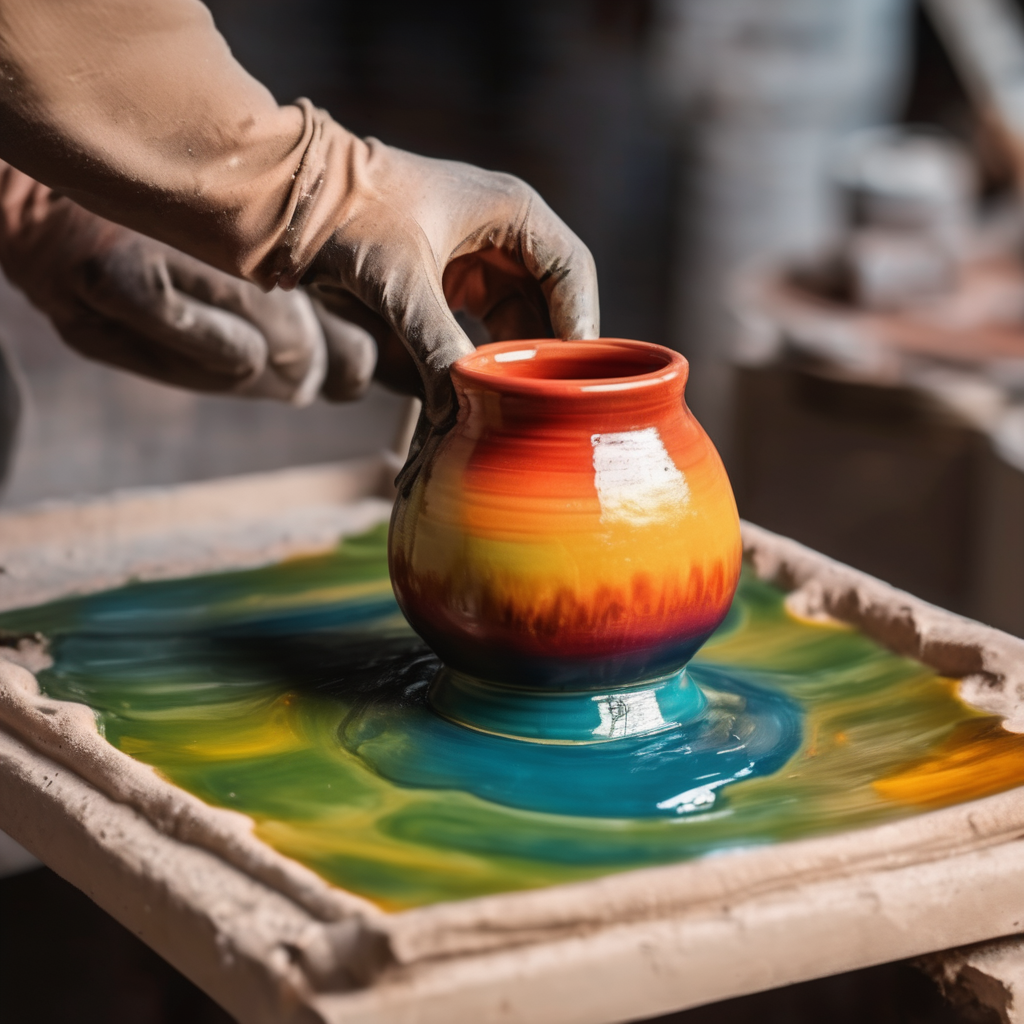Ultimate Guide to Glazing Techniques & Surface Decoration

Table of Contents
Introduction to Glazing Art & Science
Glazing transforms raw ceramic bisque into finished artworks of stunning beauty and functional durability. As ceramics expert Ria Harman explains to students at Cornwall Clay Craft, glazing is both an exact science and an expressive art form that requires understanding chemistry, technique, and creative vision.
This comprehensive guide, developed through collaboration between our glaze specialist Elena Martinez and master ceramicist Ria Harman, combines traditional glazing wisdom with modern techniques and scientific understanding. According to Ceramic Arts Daily, proper glazing technique can mean the difference between a successful firing and costly kiln disasters.
Whether you're seeking to create functional dinnerware with food-safe glazes, artistic pieces with dramatic visual effects, or exploring the endless possibilities of ceramic surface decoration, mastering glazing fundamentals will unlock your creative potential in clay.
Professional Glazing Demonstration

Watch professional glazing techniques demonstrated by expert ceramicists. This video showcases the methods Ria Harman teaches in our advanced glazing workshops, including brush application, dipping, and special effects techniques.
Understanding Glaze Chemistry Basics
At its core, glaze is a thin layer of glass melted onto ceramic surfaces during firing. Understanding basic glaze chemistry helps predict behavior, troubleshoot problems, and develop custom glazes. As Ria Harman teaches in her advanced workshops, the three fundamental glaze components work together to create successful results.
The Glaze Trinity
Silica (Glass Former)
Forms the glassy matrix that creates the finished surface. Typically 45-65% of glaze composition.
Alumina (Stabilizer)
Prevents glaze from running off vertical surfaces and adds durability. Usually 8-20% of composition.
Flux (Melter)
Lowers melting temperature and promotes glass formation. Includes materials like feldspar, whiting, and lead oxide.
According to Digital Fire, understanding these relationships allows potters to modify existing glazes and predict firing behavior with greater accuracy.
Professional Application Techniques
Glaze application method dramatically affects final appearance and requires different approaches for optimal results. Ria Harman emphasizes that consistent application technique is often more important than expensive glaze materials.
Dipping Method
Submerge bisque ware into glaze bucket for even, consistent coverage.
- • Fast, efficient for production work
- • Even thickness when done properly
- • Requires proper glaze consistency
- • Best for simple, single-color applications
Brushing Method
Apply glaze with soft brushes in thin, even coats.
- • Precise control over application
- • Ideal for detailed decoration
- • Multiple coats often required
- • Perfect for small studios
Spraying Method
Use spray gun or airbrush for smooth, professional finishes.
- • Smooth, even application
- • Excellent for large pieces
- • Requires ventilation equipment
- • Professional-quality results
Advanced Glazing Application Methods

Master advanced glazing application techniques including wax resist, trailing, and layering methods. These techniques, demonstrated by professionals and taught by Ria Harman in our workshops, create stunning visual effects.
Color Theory in Ceramic Glazing
Understanding color development in glazes requires knowledge of ceramic colorants and their behavior in different firing atmospheres. According to Sheffield Pottery, metal oxides create colors through complex chemical interactions during firing.
Primary Ceramic Colorants
- Cobalt Oxide: Produces strong blues in both oxidation and reduction
- Copper Oxide: Creates greens in oxidation, reds in reduction atmospheres
- Iron Oxide: Yields browns and reds, sensitive to firing atmosphere
- Manganese Oxide: Produces purples and browns
- Rutile: Creates tans and textures, titanium-based
- Chrome Oxide: Stable greens, can create pinks in tin glazes
Ria Harman recommends starting with small test tiles to understand how colorants behave in your specific firing conditions before applying to important pieces.
Advanced Special Effects Glazes
Special effects glazes create unique visual and tactile experiences that elevate ceramic art beyond simple color. These advanced techniques require precise control but offer unlimited creative possibilities.
Crystalline Glazes
High-zinc glazes that form crystal structures during controlled cooling.
- • Require precise firing schedules
- • Create stunning visual effects
- • Very fluid when molten
- • Challenge firing skills
Raku Glazes
Low-temperature glazes for dramatic post-firing reduction effects.
- • Dramatic metallic lusters
- • Unpredictable beautiful results
- • Requires special firing process
- • Not food safe
Special Effects Glazing Techniques

Explore advanced special effects glazing including crystalline, raku, and metallic techniques. These dramatic methods, as demonstrated by professionals and taught by Ria Harman, create one-of-a-kind ceramic artworks.
Studio Safety and Best Practices
Glaze safety is paramount in ceramic practice. Many glaze materials are toxic and require proper handling, storage, and disposal procedures. Ria Harman emphasizes that beautiful glazes mean nothing if they compromise health and safety.
Essential Safety Protocols
- Respiratory Protection: Always wear appropriate masks when mixing dry glazes or working with powders
- Skin Protection: Use gloves and protective clothing when handling glazes, especially those containing heavy metals
- Ventilation: Ensure adequate ventilation in glazing areas and kiln rooms
- Food Safety: Use only lead-free, food-safe glazes for functional pottery that will contact food
The CDC's pottery safety guidelines provide comprehensive information on protecting yourself and others in ceramic studios.
Developing Your Glazing Style
Mastering glazing techniques opens infinite creative possibilities in ceramics. As Ria Harman tells her advanced students, developing your personal glazing style comes through experimentation, careful documentation, and willingness to embrace both successes and spectacular failures as learning opportunities.
Remember that glazing is both science and art. While understanding chemistry helps predict outcomes, the magic happens when technical knowledge combines with creative vision and artistic intuition.
Ready to Master Advanced Glazing?
Join our advanced glazing workshops where Ria Harman and Elena Martinez provide hands-on instruction in professional glazing techniques and studio safety.